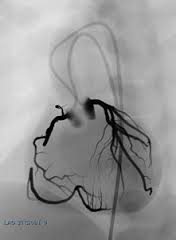 On Monday, 3D Systems (3DS) announced the expansion of its product lines for Cardiology Training and Surgical Planning. The company, which is a major, global provider of 3D digital design and fabrication solutions across multiple industries, including healthcare, is introducing, it says, “advanced simulation training for experienced cardiologists.” 3DS’ state-of-the-art cardiovascular anatomical modeling services now provide, according to the company’s recent press release, “patient-specific 3D printed models for surgical planning and education.”
On Monday, 3D Systems (3DS) announced the expansion of its product lines for Cardiology Training and Surgical Planning. The company, which is a major, global provider of 3D digital design and fabrication solutions across multiple industries, including healthcare, is introducing, it says, “advanced simulation training for experienced cardiologists.” 3DS’ state-of-the-art cardiovascular anatomical modeling services now provide, according to the company’s recent press release, “patient-specific 3D printed models for surgical planning and education.”
The anatomical model product line is 3D printed and, moreover, it is patient specific, which means that each model is based on thorough imaging data derived from MR and/or CT scans. With the scan data, 3D models are produced with incredible precision and then 3D printed for use, says 3DS, “as pre-surgical planning tools, educational resources, and benchtop fixtures for testing of instruments and implants.”
3DS combines its own high-tech services with the constantly developing technology of interventional cardiology, including a far less invasive (than traditional surgical procedures) procedure, Percutaneous Coronary Intervention (PCI). As PCI evolves, becoming more sophisticated and complex yet, in contrast, less invasive, 3DS stays on top of things, creating, says the company, “advanced training scenarios for Coronary CTO (Chronic Total Occlusion) and Coronary Bifurcation” using the ANGIO Mentor VR endovascular simulator in concert with “a cardiovascular anatomical model product line” that permits clinicians to visualize the incredibly complex anatomy of the cardiovascular system.
But what does that mean in layman’s terms? Imagine this: you are preparing to undergo the PCI procedure. Well before you check into the clinic or hospital, your surgeon is collaborating with an entire patient care team, including 3DS, to create a surgical plan that includes using a 3D printed, life-size model of your heart produced with 3DS’ ColorJet Printing (CJP) technology. The model is, says 3DS, “a rich, full color 3D illustration” of your heart. Indeed, models like these make it easier for your doctor to “visualize and understand…complex congenital heart defects.”
In addition to the full color, life size models, 3DS also assists clinicians in creating models of the human body’s vasculature that are translucent and include, explains 3DS, “selective coloration of calcific deposits.” 3DS uses the Stereolithographic 3D printing process to produce the translucent models for both implants and surgical procedures.
Dr. Shafkat Anwar, MD, an Assistant Professor of Pediatrics in the Division of Cardiology at St. Louis Children’s Hospital, discussed the hospital’s collaboration with 3DS.
“We have collaborated with 3D Systems,” said Dr. Anwar, “to print 3D models of complex congenital heart disease. These models play an important role in patient care, from surgical planning to trainee and patient/family education. I believe 3D printing is a leap in the evolution of personalized medicine, and will hopefully improve patient outcomes. 3D Systems has been a vital partner for us in this initiative.”
Thanks to the constantly evolving and improving 3D technology of 3DS, doctors need no longer rely only on two-dimensional data from scans much less more invasive exploratory surgical procedures. Now, says 3DS, doctors can “achieve better patient outcomes by integrating surgical simulation, training, planning, and printing of anatomical models, surgical instruments and medical devices.”
To see how this incredible technology works in real life, if you’re in San Francisco from October 12 to the 14th, visit 3DS’ booth at the TCT (Transcatheter Cardiovascular Therapeutics) exhibition. Discuss this story in the Cardiac 3D Printing forum thread on 3DPB.com.
Subscribe to Our Email Newsletter
Stay up-to-date on all the latest news from the 3D printing industry and receive information and offers from third party vendors.
Print Services
Upload your 3D Models and get them printed quickly and efficiently.
You May Also Like
Consolidation in AM: How 2025 Is Shaping the Industry’s New Normal
The first half of 2025 has been marked by a clear shift in the additive manufacturing (AM) industry. Companies are no longer just focused on developing new tech by themselves....
Etsy Design Rule Change Reduces Selection of 3D Printed Goods
Online marketplace Etsy has implemented a rule change requiring all 3D printed goods on the site to be original designs. The update to the site’s Creativity Standards states, ¨Items produced using...
U.S. Congress Calls Out 3D Printing in Proposal for Commercial Reserve Manufacturing Network
Last week, the U.S. House of Representatives’ Appropriations Committee moved the FY 2026 defense bill forward to the House floor. Included in the legislation is a $131 million proposal for...
Transforming From Tourist to Native: Duro CEO Michael Corr Explains Why the Company Rebuilt its PLM Software on AI
In these early innings of the AI boom, many market analysts have expressed concern that AI spend has gotten too far ahead of the technology’s proven ability to deliver significant...


































